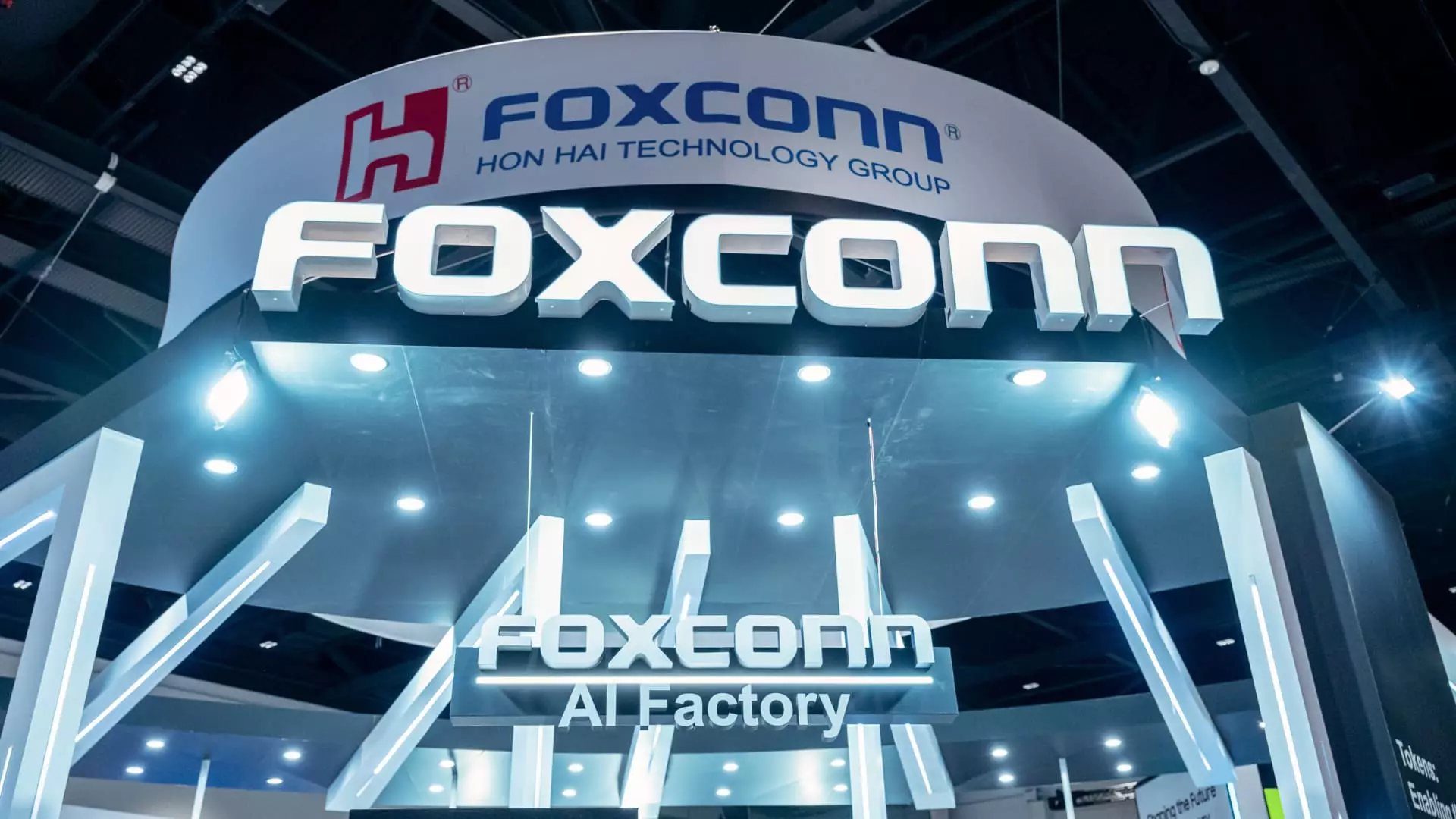The recent financial disclosures from Foxconn, the technological titan behind the world’s most ubiquitous smartphones, reveal a company that is arguably overperforming expectations amidst a turbulent global landscape. While the reported 27% year-over-year increase in operating profit might appear as a testament to corporate resilience and strategic foresight, the broader narrative indicates a complex web of opportunities and vulnerabilities. Foxconn’s pivot toward artificial intelligence servers signifies a conscious effort to diversify beyond consumer electronics’s traditional realm. This move is not merely about capitalizing on a lucrative niche; it is an audacious bet on AI’s future dominance. The fact that server sales now constitute 41% of revenue, overtaking consumer products, underscores a significant shift in corporate priorities. However, such rapid expansion introduces risks that cannot be ignored: reliance on the burgeoning AI semiconductor industry, geopolitical headwinds, and potential overextension.
Economic Optimism Encased in Political Uncertainty
Despite impressive growth figures, Foxconn’s outlook is tinged with geopolitical tension and policy uncertainty. The company’s expansion into AI data centers and its strategic investments—like the stake in TECO Electric & Machinery—highlight a commitment to staying ahead of the global technological curve. Yet, the shadow of tariffs, especially the recent threats from the U.S. administration, looms large. The move of U.S.-bound iPhone assembly to India exemplifies how geopolitical tensions are shaping corporate strategies. While Foxconn has made commendable efforts to diversify manufacturing bases, the specter of tariffs with potential 100% duties on semiconductors and chips presents a serious challenge. Such measures threaten to inflate costs and disrupt supply chains, forcing the company to navigate a treacherous political terrain stealthily. A company of Foxconn’s size cannot affix its future solely on market trends; it must meticulously assess and influence the geopolitical climate to safeguard its investments.
Strategic Diversification: A Double-Edged Sword
Foxconn’s increasingly diversified portfolio—including investments in electric vehicle assembly and semiconductor manufacturing—is indicative of a forward-thinking mentality that seeks to hedge against sector-specific downturns. However, this diversification also brings inherent risks. Entering new markets requires not only significant capital but a mastery of entirely different industry dynamics. The ambitious $1 billion investment in the U.S. over a decade, while promising, is a gamble that hinges on stable political relations and favorable trade policies. Moreover, the company’s engagement with industries like EVs and semiconductors is a departure from its core manufacturing expertise, risking dilution of focus and managerial resources. In an age where rapid technological shifts can render investments obsolete in a matter of years, Foxconn’s willingness to expand into uncharted territories might either cement its status as a resilient tech conglomerate or stretch its capabilities too thin.
A Center-Right Perspective: Innovation Amidst Political Turbulence
From a center-right liberal perspective, Foxconn’s aggressive push into AI and manufacturing innovation aligns with principles of dynamic capitalism and strategic competitiveness. It exemplifies a belief that technological advancement and economic growth are best fostered through strategic investments and infrastructural development. Nonetheless, this optimism must be tempered by a pragmatic understanding that global politics can swiftly derail even the most promising plans. Protective policies, tariffs, and trade restrictions are legitimate concerns, especially given the current administration’s unpredictable stance on international trade. Foxconn’s efforts to establish a foothold in North America, despite geopolitical headwinds, reflect a willingness to adapt and build resilient supply chains—an approach that aligns with the center-right view of fostering economic independence and national security through diversified manufacturing.
Foxconn’s remarkable second quarter underscores a company that refuses to accept stagnation amid global upheaval. Its bold migration into AI infrastructure and strategic diversification signal a proactive approach to growth, yet they are accompanied by vulnerabilities rooted in geopolitical volatility and market unpredictability. As the firm navigates this complex landscape, its ability to sustain and expand its recent gains will depend largely on how it manages external risks while capitalizing on internal innovation. The path forward is fraught with uncertainties, but Foxconn’s leadership appears committed to transforming challenges into opportunities—a gamble that, if successful, could redefine its global footprint in the next decade.

